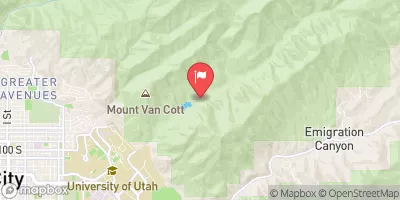Summary
The lake is home to a variety of fish species, including rainbow trout, brown trout, and cutthroat trout. The best time to visit Lake Lillian for fishing is between late spring and early fall, when the weather is mild and the fish are most active. The average temperature during this time is between 60°F and 80°F.
Fishing in Lake Lillian is best done with fly fishing gear, as the fish tend to respond well to this technique. When fishing for rainbow trout, it is recommended to use small dry flies or nymphs, while brown trout tend to prefer larger streamers or leech patterns. Cutthroat trout can be caught using a variety of techniques, including dry flies, nymphs, and wet flies.
In addition to fishing, Lake Lillian is surrounded by beautiful scenery and is a popular spot for hiking, camping, and picnicking. Nearby attractions include the Uinta Mountains, which offer stunning views and great hiking trails.
To make the most of your fishing trip to Lake Lillian, it is recommended to bring waders or waterproof boots, as the lake can be quite muddy. It is also important to be mindful of the weather, as the lake can become choppy and difficult to fish in during windy conditions.
Overall, Lake Lillian is a great destination for anglers looking to catch a variety of trout species in a beautiful mountain setting.
Weather Forecast
Nearby Streamflow Levels
Angling Safety Guidelines
Check local fishing rules, seasons, size limits, and license requirements to ensure legal and sustainable angling.
Handle Fish Responsibly
Use wet hands, minimize air exposure, and release fish gently to improve survival rates when practicing catch-and-release.
Choose the Right Gear
Match your rod, line, and tackle to the species and conditions to increase success and reduce unnecessary harm to fish.
Respect the Waterway
Avoid disturbing habitat, prevent bank erosion, and keep a safe distance from spawning areas to protect ecosystems.
Keep It Clean
Pack out all line, hooks, bait containers, and trash—discarded gear can injure wildlife and degrade waterways.
Related Links
Area Campgrounds
| Location | Reservations | Toilets |
|---|---|---|
 Tanners Flat
Tanners Flat
|
||
 Tanners Flat Campground
Tanners Flat Campground
|
||
 Jordan Pines Group Campground
Jordan Pines Group Campground
|
||
 Spruces Campground
Spruces Campground
|
||
 Spruces
Spruces
|
||
 Albion Basin Campground
Albion Basin Campground
|

 Lake Florence
Lake Florence
 Lake Solitude
Lake Solitude
 Lake Martha
Lake Martha
 Silver Lake
Silver Lake
 Lake Desolation
Lake Desolation






 Red Pine
Red Pine
 Glacio Park
Glacio Park
 Bair Park
Bair Park
 Bywater Park
Bywater Park
 Mill Hollow Park
Mill Hollow Park
 Dimple Dell Regional Park
Dimple Dell Regional Park